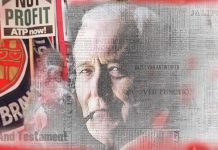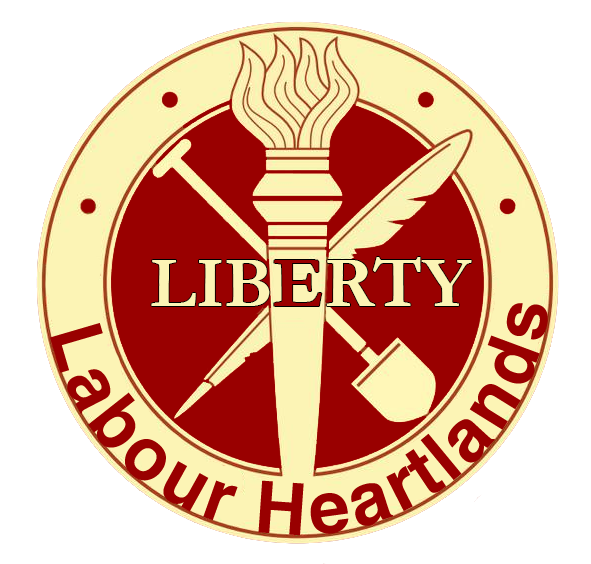1984 Miners’ Strike: The Iron Heel of State Repression and Working-Class Defiance
Growing up, I was fortunate to live near the fabled site of the Battle of Hatfield Chase in 633, one of the most decisive clashes in Saxon England. The local tales of the Northumbrian King Edwin’s fateful stand against the Gwynedd-Mercian alliance captivated my youthful imagination.
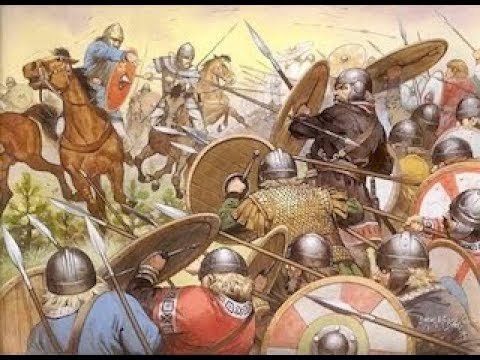
Little did I know that on the eve of my 18th birthday, another epochal battle would unfold on that same ground – one that would shape the future relationship between the working class and the establishment for generations.
The Battle of Hatfield Main
The year was 1984, and just weeks before joining the British Army at Woolwich, my father became one of 165,000 miners forced into a year-long strike against Thatcher’s plans to shutter pits and destroy trade union power.
After six gruelling weeks of basic training, my family travelled to Woolwich for my passing out parade. It was a moment of immense pride, having navigated the challenges and camaraderie of boot camp. However, our celebratory journey home along the long north road out of London took a sharp turn. What awaited us wasn’t the anticipated warmth of a homecoming, but a harsh awakening.
Looking back, I realise my youthful naivety. At the time, I had little understanding of the immense sacrifices a striking family endures. Months without wages, the strain of financial uncertainty, and the constant worry – yet they still undertook a 380-mile round trip to witness my milestone. This experience, etched in my memory, has instilled a deep appreciation for the unwavering support and sacrifices made by loved ones during difficult times.
Of course, that was balanced out in the witnessing of state oppression…
Thatcher’s Iron Heel
Reaching Nottingham we were stopped. Police checkpoints had been set up, by all accounts a tactic to stop flying pickets. I expected in my utter naivety that we would be waved on. There I sat cock sure in full uniform. I expected a little respect. Instead, we were met with suspicion and hostility and the entire facade dropped to reveal the iron fist of state repression.
Police harassment at every turn, aggressive questioning, and blatant intimidation – all for the crime of having mining roots. Here was I, freshly kitted in parade uniform yet treated as a subversive, the state showed its ugly face and turned on my family, decent folks doing nothing but fighting to work. An injustice that stoked my righteous anger.
This continued at every junction and roundabout, and for those ‘that know’, in 1984 the A1 had many, many roundabouts. At every checkpoint, a chilling display of the state’s “Iron Heel” pressing down on anyone linked to a pit village.
As an excitable young squaddie, my leave from the Army was overshadowed by the palpable melancholy that had descended on the community I called home. The struggles of the miners’ strike had cast a long, dark shadow over the streets and people I had grown up alongside.
Gone was the easygoing camaraderie and working-class cheer that had once characterised our tight-knit town. In its place lingered a simmering tension, a grimness etched onto the faces of families caught in the crosshairs of this momentous clash of wills. The jovial banter traded in pubs and on street corners had turned somber, weighed down by the precarity of their situation.
Those I had kicked a football with as a boy, played knockabout cricket in the ginnels between terraced houses, now strode with the unmistakable thousand-yard stare of men inured to hardship. Their jaws were set, eyes hollowed by the strain of standing resolute against powers that would see their very livelihoods erased on an ideological whim.
Yet amid the funereal atmosphere, an unmistakable flicker of defiance still burned. The Yorkshire grit that had sustained generations against all hardships endured, tended by calloused hands inured to making blessing of scant offerings. Where most would falter, this bedrock stoicism elevated mere perseverance into the stuff of inspirational lore.
My working-class kin would not be cowed or dispirited by the forces arrayed against them, even as the vice inexorably tightened. Gritted teeth and sheer stubbornness would defy the darkness closing in. For the miners’ lot has forever asked them to overcome, to wrest triumph from the jaws of privation against any odds.
It was a searing lesson in the immutable nature of class struggle. Though I wore the fresh creases of military dress, my marrow had been shaped by the same unyielding elements that fired their unbreakable will. Thatcher had no idea who she had come up against. We were branches from the same twisted, toughened oak, that had stood in the battle of Hatfield Chase, the same folk that were defiant of the Norman yoke. United in sinewy resilience, we would endure this trial as we had others before – stonefaced, unbowed, even if we were to be conquered, we would never be defeated.
The Pit Lane
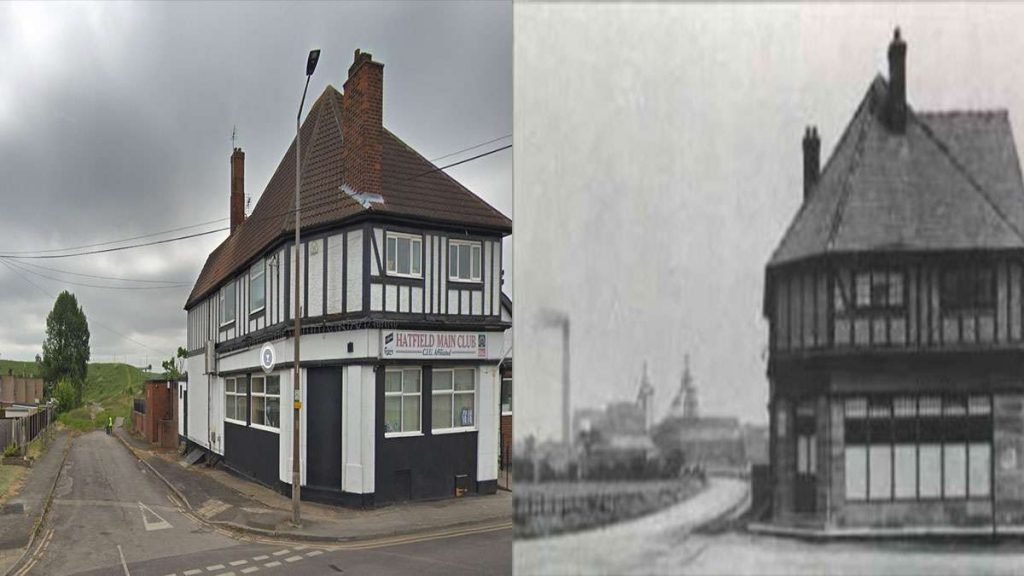
A few weeks in when the call went out to picket and defend the Pit Lane from scab labour, I stood in solidarity alongside my striking kin and community. Unforgettable scenes remain seared into memory – searching the police lines for military conscripts only to witness the Met’s riot thugs charge forward, batons raining down on defiant miners sitting peacefully.
The tactics now eerily familiar, mirroring what I’d later learn in Northern Ireland. This wasn’t war; it was the crushing of dissent against civilians, against my own community. Witnessing the police charge into helpless miners, batons raining down on the backs of and heads of men sat peacefully picketing on the ground, cemented a harsh reality – the powerful versus the powerless, an “us vs. them” narrative etched in steel.
In that moment, the gravity of class struggle crystallised. The tales of “us vs. them” I had grown up with ceased being distant history. The boot of oppression treads no lighter on workers’ necks in modern times.

The Battle of Hatfield Main showed the true face of power confronting those who defy its diktats.
That 1984 confrontation may have lacked the epic body count of the original Hatfield showdown, but its devastating legacy arguably affects more lives. Tory objectivism won the day, smashing a once-proud mining culture and condemning communities to generational deprivation.
Yet the spirit of resistance remains unbroken. Where King Edwin’s realm collapsed, we draw inspiration from the miners’ valiant defiance to continue rebuilding working class power. Their sacrifices remind us that solidarity, not servility, is the only path to justice.
The battles change but the struggle endures. We honour the fallen by staying true to their cause. Another and better world is possible – if we have the courage to fight for it.
-Paul Knaggs, Labour Heartlands.
Never Forgive, Never Forget
I don’t think anything captures the events of the Battle of Hatfield Chase better than Ray Rising in this article and imagery of the day. Below – Ray a News Line photographer and partisan recalls the events that took place at the battle of Hatfield Main.
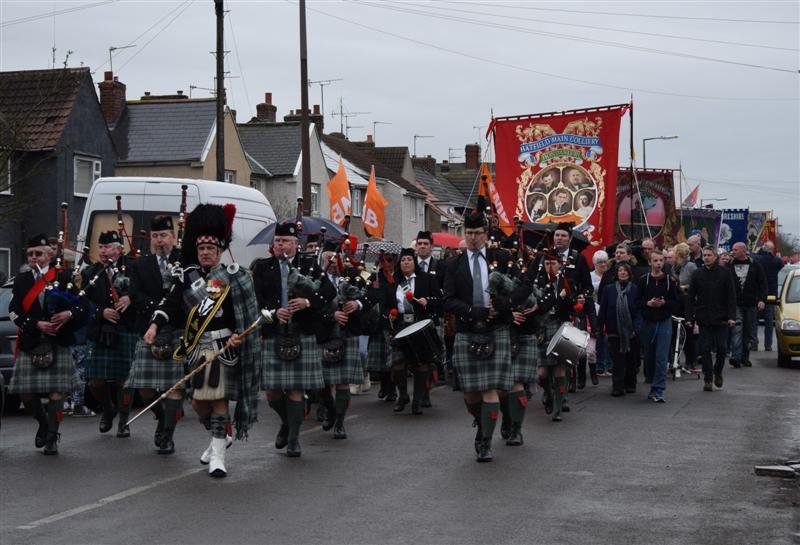
The crossroads at the ‘pit lane’ is the former battleground where the state used its power and machinery to try and smash the resistance of the people fighting to keep their jobs and communities together.
Stainforth is a small mining village situated near Doncaster and Barnsley, Yorkshire, showed to me in a series of episodes, the ‘civil war’ nature of the miner’s strike of 1984. The working people around Stainforth, Armthorpe and Woolley certainly could testify to the ruthless nature of ‘the enemy within’ the capitalist state.
That the miners suffered a defeat that took almost a full year to play out demonstrated the creative combativity of their struggle. Capitalist grandees of business cheered on the assaults led by the police but the whole spectrum of society knew from daily visions on the TV and in the media that this was a war, albeit oftentimes edited or ignored to lessen the impact.
The cynical but consistent failure of the ‘responsible left’ i.e. Labour Party and Communist Party leaders have, ever since left a legacy within the working class that will never be forgotten. Thirty-six years have passed since those eventful days but still, the memories have not dulled the clarity to those involved. This was a social mugging by the state that left many lessons ingrained.
My recall goes back to Stainforth/Hatfield 7 miles North-East of Doncaster. In itself not dissimilar in design and aspect to the housing familiar to me around the Ford factory in Dagenham, Essex. However, Stainforth, and its adjacent coal mine of Hatfield Main, were to witness some extraordinary sights during one sultry day in August of ’84.
The strike had been going for five months and not a single strike-breaker had dared to challenge the village population by attempting to go to work. But on the 21st of August that changed. Three scabs, we were told, had broken the strike and had ‘gone in’ to the accompaniment of many flying missiles and protection from the armed attendance of the Greater Manchester Constabulary soon after dawn.

Myself and reporter Simon Veevers* had been at Armthorpe, three miles away, another strongly supported strike village, when we were passed a message from one of Simon’s innumerable contacts in the area about the earlier goings on’ at Hatfield Main. We hightailed there to find not a stand-off but a sit-off. The police lines had meanwhile been reinforced by another detachment from London’s Met, whilst the whole village, older men, women and children were behind their side – miners sat across the end of the pit lane in a blockade.
The time was approaching when the police would move to bring out the vehicle containing the scabs through the only exit from the pit. The strike-breakers hadn’t gotten their hands dirty for pay that day. Their purpose was purely to create a psychological wedge in the remote countryside village and facilitate the use of the big city forces mobilised by the Association of Chief Police Officers to do their worst.
There were no token attempts at negotiation or notification with the miners and villagers on the part of senior police officers. They knew why they were there. It mattered not to them that one of the scabs had been gently persuaded to rejoin the strike and had left the ferrying wagon with now, just two aboard for the gauntlet run through the Stainforth’s defiant line. In fact, if a scab was limbless with a bad back and total memory loss he would still have been told: “the force is with you”. The mercury was rising and we could sense the fidgety impatience throughout the ranks of the closely packed, overdressed lines of blue.
On a simple signal, both left and right wings of police charged forward – punching, kicking and truncheoning all before them. Of course, the majority of the miners climbed to their feet and scattered to avoid the blows. Others sat their ground and were overwhelmed with hardwood sticks, steel toe-capped boots and shields. Men women and children ran. There were subsequently many days like this at Stainforth with divisions of police-horses and dog-handlers rampaging through the little alleyways that crisscrossed the miners housing.

Some months after the 21st of August I was asked to print four sets of photos for a forthcoming court case in Doncaster. A miner who had been collared immediately after the police charge had started was now, we learned, being charged with assaulting the police! The fact that he had stopped breathing after his beating and had been resuscitated in the emergency room altered not the state’s victimisation at all.
The pictures clearly showed his distinctive tee-shirt being enveloped by a sea of blue. He obviously had neither time nor weapons for assault as against the police ….. I’ll not name the miner for I write this story without his permission. On the day in court, the files of photographs were passed to the solitary circuit (miners strike) Judge, the prosecution counsel, the defence counsel and myself.

After affirming, to tell the truth with my hand raised and left foot on the bible the prosecution questioned me, not on what I had seen as a witness, but on how my exhibits could be trusted – being that I worked for a revolutionary newspaper! The judge interjected, countering the prosecutor with, “ the witness is here to confirm the validity of the photographs – do you question their truth?” The police prosecutor bowed his head and said, “No your honour.” Had the prosecution embarrassed the judge with their witch-hunt of objective truth? Surely not a conspiracy to validate the objectivity of the Big-Wig? No matter the judge duly found him guilty on the verbal from several of Manchester’s law enforcers. Photo evidence is obviously inferior to police testimony.

The judge vindicated his ‘profession’ without a jury. The officers did their job. I and the miner had been the only unpaid attendee. He did three months. These court cases were repeated with monotonous and banging-up regularity over the ensuing months of miners’ appearances.

Justice is class justice, always was, always will be – better be the day when the ‘rules of court’ and judgements are passed down by the working class themselves.
The convoys of police marauding around Yorkshire and Nottinghamshire have left many indelible memories for me, but standing out in starkest relief on reflection is the recall of those seemingly little but obstinate organisms that grew in town and village around the pit. This is the way of social being. It will be again. Perhaps not for us. But it will be I’m sure. * Comrade Simon Veevers was with me in court that day too, but sadly he is no longer with us. He died at the start of winter last year. He was a class fighter who did everything he thought he could do and more to advance the miners’ strike in 84-85.
His stories and interviews were often the only breath of truth to reach mining areas amid a sea of putrid and toxic lies from well-paid scribblers and editors.
Republished from the original article by Ray Rising – a News Line photographer and partisan
Photographs taken by Ray and colleagues at the Hatfield picket line: August 21st ’84
Hatfield Main’s story is one of broken promises and shattered dreams. From the 1984 defeat, symbolised by the dwindling NUM presence and the eventual closure of the pit, to the neglect faced by communities across the country, the tale is etched in the 73% of residents who see no progress.
Thatcher’s and Blair’s comfortable delusion of a rising tide lifting all boats has been exposed for what it is: a blatant disregard for those already struggling to stay afloat. We, the working class, have learned one crucial lesson – we will not be silenced or broken. The fight for a better future continues, and this time, we will not be ignored.
First published by Paul Knaggs -March 3, 2021
Support Independent Journalism Today
Our unwavering dedication is to provide you with unbiased news, diverse perspectives, and insightful opinions. We're on a mission to ensure that those in positions of power are held accountable for their actions, but we can't do it alone. Labour Heartlands is primarily funded by me, Paul Knaggs, and by the generous contributions of readers like you. Your donations keep us going and help us uphold the principles of independent journalism. Join us in our quest for truth, transparency, and accountability – donate today and be a part of our mission!
Like everyone else, we're facing challenges, and we need your help to stay online and continue providing crucial journalism. Every contribution, no matter how small, goes a long way in helping us thrive. By becoming one of our donors, you become a vital part of our mission to uncover the truth and uphold the values of democracy.
While we maintain our independence from political affiliations, we stand united against corruption, injustice, and the erosion of free speech, truth, and democracy. We believe in the power of accurate information in a democracy, and we consider facts non-negotiable.
Your support, no matter the amount, can make a significant impact. Together, we can make a difference and continue our journey toward a more informed and just society.
Thank you for supporting Labour Heartlands


